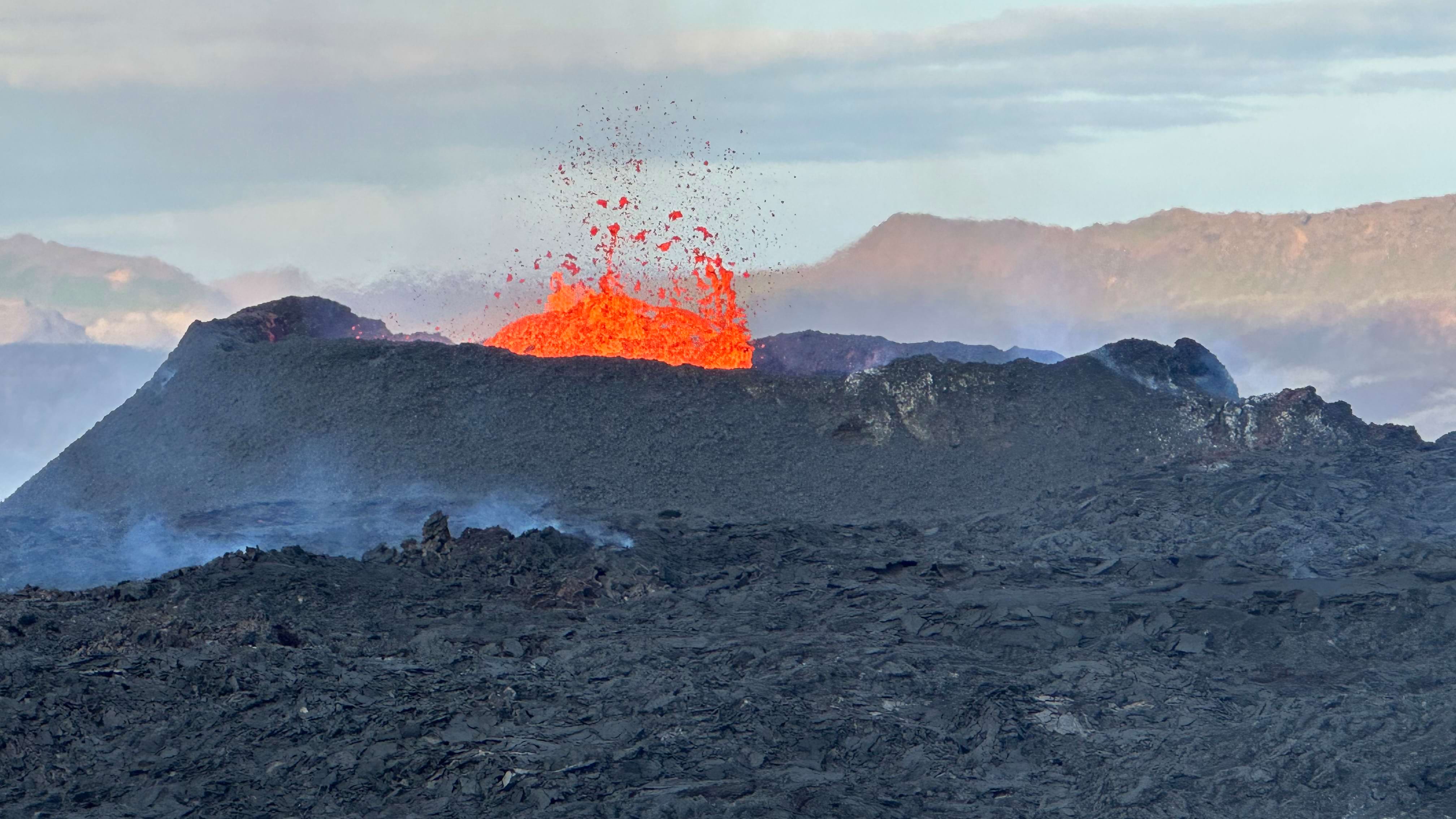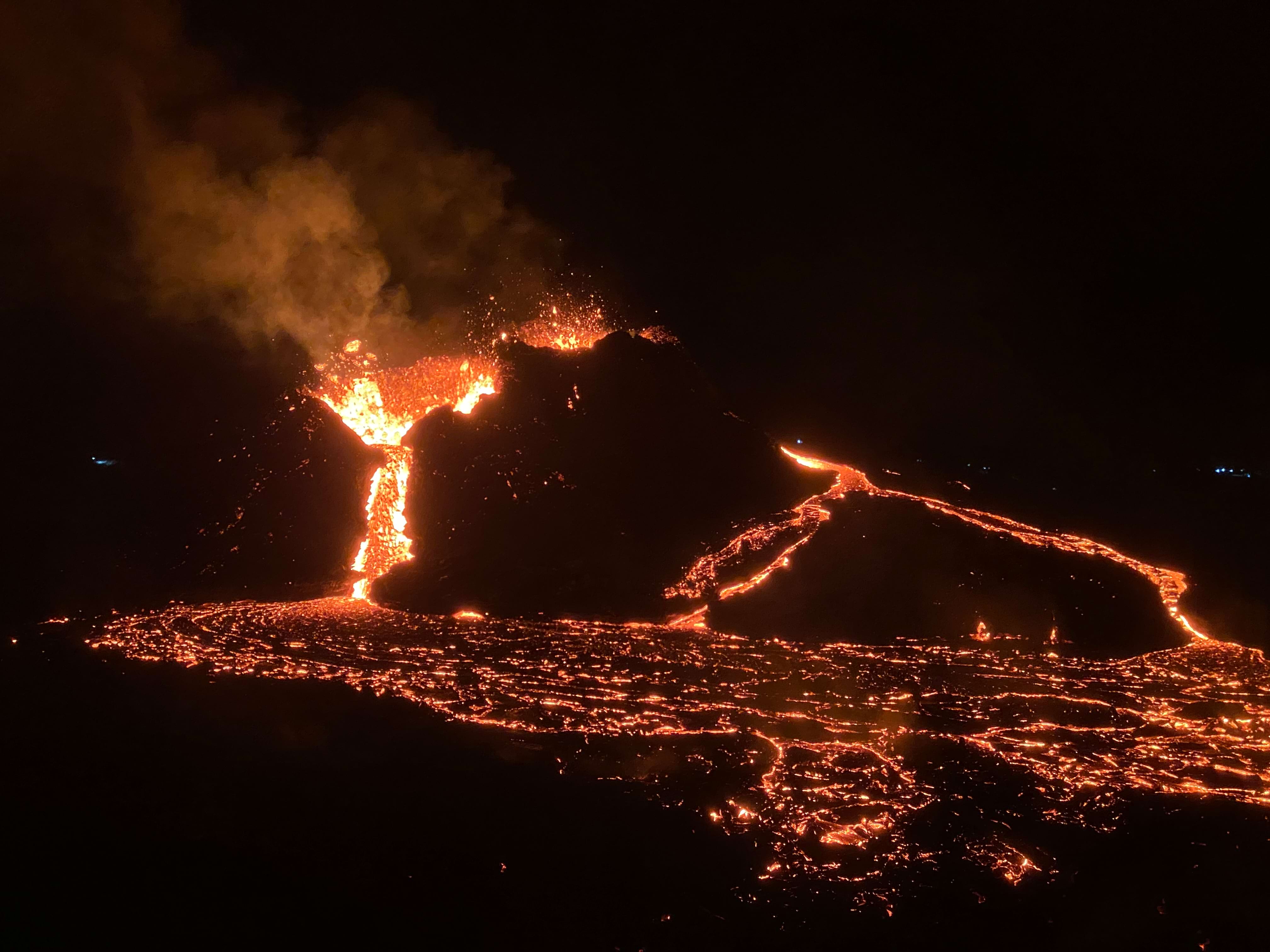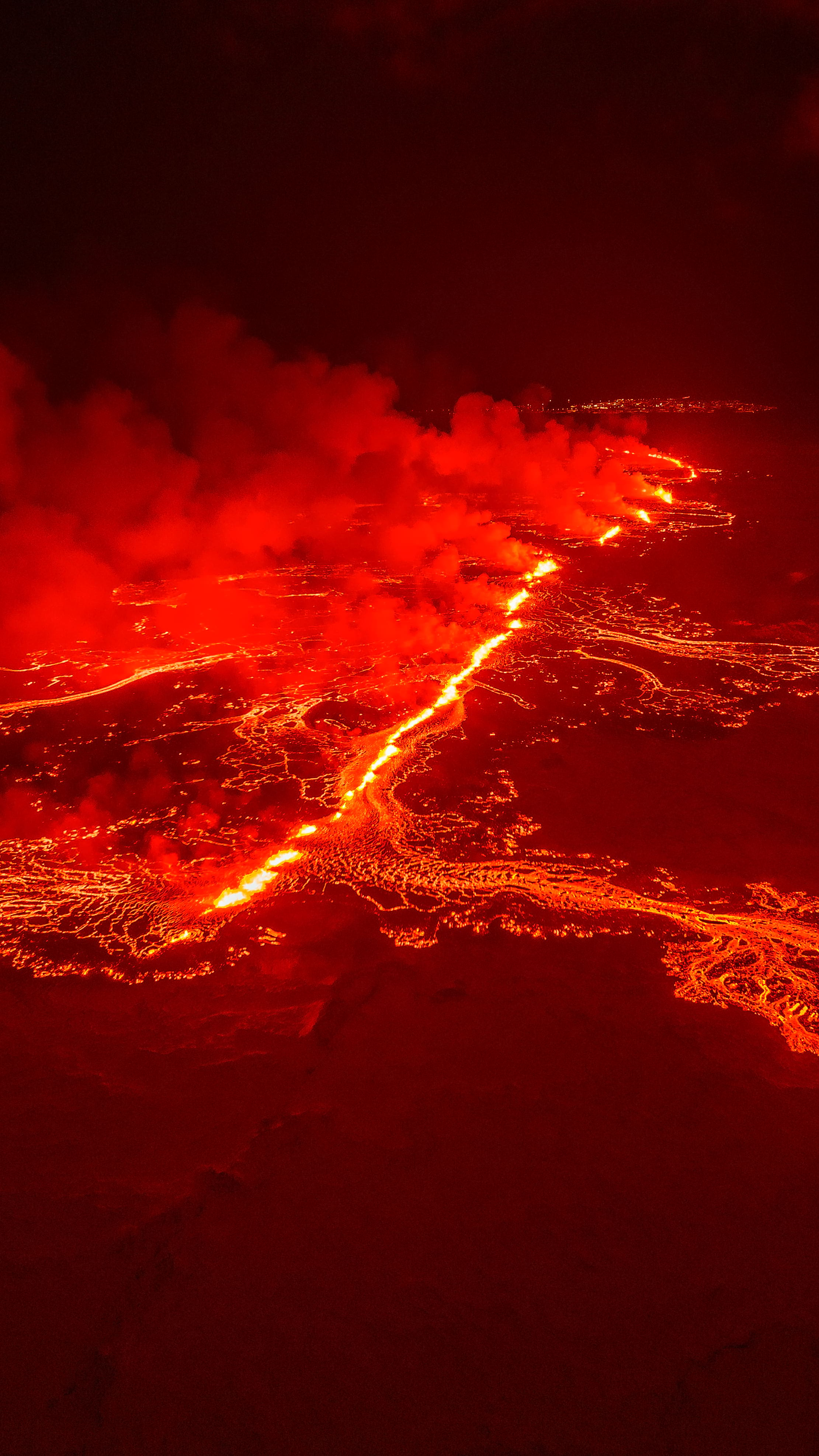Exploring the Majestic Volcanoes in Iceland: A Traveler's Must-See Guide
Iceland, a land of fire and ice, is a paradise for geology enthusiasts and adventure seekers alike. Its volcanic landscape, formed by the dynamic interplay between geothermal energy and glacial activity, offers a stunning array of natural phenomena ranging from spouting geysers to vast lava fields. But what makes these volcanoes in Iceland so unique, and what can they tell us about the Earth’s geology? Join us as we delve into the heart of Iceland’s fiery wonders and discover the fascinating world of its volcanic landscape.
Key Takeaways
-
Iceland’s volcanic landscape is shaped by the Mid-Atlantic Ridge and hot spots, resulting in diverse regions with distinctive topographies such as lava fields, craters, and calderas, attracting geology enthusiasts and tourists.
-
Tourism in Iceland has embraced its active and iconic volcanoes, with guided tours and activities like helicopter flights, hikes through lava fields, and bathing in geothermal hot springs, contributing to the economy.
-
Icelanders have adapted to living with active volcanoes by prioritizing earthquake preparedness and harnessing geothermal energy for heating and electricity, reducing the reliance on imported fossil fuels.
Iceland's Fiery Wonders: A Journey Through the Land of Volcanoes
 Photo by AOR
Photo by AOR
The volcanic landscape of Iceland, an island born out of the fiery eruptions of the Mid-Atlantic Ridge, offers a unique window into the Earth’s geologic processes. We will traverse the path from the inception of its volcanic landscape to the significance of hot spots in Icelandic volcanism, exploring the land of volcanoes.
The Birth of Iceland's Volcanic Landscape
Imagine witnessing the birth of an island, as magma from deep within the Earth’s mantle rises, erupting through the ocean floor and solidifying to form new land. This is the process that formed Iceland, where the North American and Eurasian tectonic plates diverged along the Mid-Atlantic Ridge. Today, Iceland’s volcanic landscape is a testament to this fiery birth, with features ranging from extensive fields of moss-coated lava to expansive plains of black sand and rugged peaks.
A road trip or a self-driving tour around the island allows visitors to directly experience this distinctive terrain and encounter Iceland’s active volcanoes up close.
The Volcanic Zones: North, East, and West
Iceland’s volcanic activity is concentrated within three main zones: the North, East, and West. Each zone offers distinctive volcanic features and attractions. The North Volcanic Zone, for instance, is home to the active Krafla volcano, renowned for its proximity to the geothermal area of Namafjall and the striking emerald blue Viti crater. The East Volcanic Zone is where Askja, a geothermal volcano, can be found, which can be reached by navigating through various roads and crossing rivers. And in the West Volcanic Zone, the Krafla volcano caldera presents a unique topography with a diameter of 6.2 miles (10 kilometers).
Each of these regions, with their distinctive volcanic systems, bear witness to Iceland’s rich volcanic heritage and are certainly worth a visit for those intrigued by the island’s fiery past.
The Role of Hot Spots in Icelandic Volcanism
A key player in Iceland’s volcanic activity is the hot spot, a region in the Earth’s mantle that generates a significant amount of heat, leading to volcanic activity on the surface. For instance, the Askja volcano is a product of hot spot activity, and some volcanoes in Iceland belong to the same volcanic system, sharing a common magma source.
The eruption of Askja, a volcano influenced by a hot spot, resulted in extensive consequences such as land contamination, loss of livestock, and disturbance of life in various parts of Iceland, especially in the Eastfjords. Nearby, the Viti caldera, a characteristic linked to hot spot volcanism, showcases the geothermal potential of Icelandic hot spots, with a nearby geothermal lake offering warm temperatures suitable for bathing.
Discovering Iceland's Most Iconic Volcanoes
 Photo by AOR
Photo by AOR
Iceland’s most iconic volcanoes, also known as famous Iceland volcanoes, have left their imprint on the world, causing global disruptions to air travel and inspiring epic tales of adventure. Among these towering giants are Eyjafjallajokull, Fagradalsfjall, and Hekla, each with their own unique stories and lasting impacts on both the country and the world at large. The eruption of an Iceland volcano can have far-reaching consequences, as witnessed in the past with the power of Icelandic volcanoes.
Eyjafjallajokull: The Volcano That Stopped Air Travel
The Eyjafjallajokull volcano, nestled along the South Shore of Iceland, is known not for its size, but for the magnitude of its impact. In 2010, it erupted in a spectacular display of nature’s power, sending ash clouds into the sky that disrupted air travel across the globe. This event, which resulted in the cancellation of over 100,000 flights and affected approximately 7 million passengers worldwide, brought Eyjafjallajokull into the international spotlight.
Today, the volcano is a popular tourist attraction, drawing visitors who wish to witness the site of this historic eruption. Various tours are available for those looking to explore Eyjafjallajokull, from snowmobile tours to guided hikes and super jeep tours.
Fagradalsfjall: A Window into Recent Volcanic Activity
In contrast to the explosive eruption of Eyjafjallajokull, Fagradalsfjall volcano on the uninhabited Reykjanes peninsula is renowned for its relatively calm, effusive eruption style. Consistent streams of magnesium-rich lava flow from the volcano, creating a mesmerizing spectacle for observers. The volcano’s recent eruption provides a unique opportunity to witness this geological phenomenon up close.
However, those planning a visit should be prepared for a physically demanding journey, as the entire route to the eruption site spans approximately 18–20 kilometers and includes navigating through various roads and crossing rivers. For those seeking an alternative viewpoint, helicopter tours offer an aerial perspective of the eruption site.
Hekla: The Legendary 'Gateway to Hell'
Last but not least is Hekla, one of Iceland’s most active and formidable volcanoes. Known as the ‘Gateway to Hell’, Hekla’s ominous reputation in folklore is a testament to its historical significance and enduring power. Despite its fearsome nickname, Hekla is a popular hiking destination, offering stunning views of the South Icelandic landscape.
The most recent eruption, also known as the last eruption, occurred in the year 2000 and serves as a poignant reminder of the force that lies beneath the surface. The effects of this eruption were significant, with a large ash cloud reaching up to 30km in height and devastating the surrounding valleys.
Navigating Iceland's Active Volcanoes
 Photo by Björn Steinbekk
Photo by Björn Steinbekk
With approximately 30 active volcanoes scattered across the country, Iceland is a hotbed of seismic activity. While this may sound daunting, the reality is that these active volcanoes have become an integral part of the Icelandic landscape, offering unique opportunities for exploration and adventure.
We will explore various aspects of Iceland’s active volcanoes, from learning about the number of active peaks, visiting eruption sites, to experiencing geothermal wonders.
How Many Volcanoes Are Active in Iceland?
Iceland is a veritable playground for geology enthusiasts, with approximately 130 active and inactive Iceland volcanoes scattered across its landscape. Among these, about 30 are classified as active, meaning they have erupted within the last 10,000 years. However, active volcanoes are notably absent in the Westfjords, the oldest part of the country, which has drifted away from the Mid-Atlantic Ridge, the source of volcanic activity.
The rest of the country, from the North Volcanic Zone to the East and West zones, is dotted with active volcanoes, including the recently active Fagradalsfjall volcano.
Visiting Active Eruption Sites: What You Need to Know
With so many active volcanoes, you might be wondering how safe it is to visit these sites. The good news is that visiting active eruption sites in Iceland can be a safe and thrilling experience, provided you take the necessary precautions. Before visiting, ensure to:
-
Verify the accessibility and safety conditions of the site
-
Join a guided tour for an extra layer of safety
-
Pack essential items such as sturdy hiking shoes, appropriate clothing, ample water, and a first aid kit
Geothermal Marvels: Hot Springs and Geothermally Heated Areas
Aside from the awe-inspiring spectacle of erupting volcanoes, Iceland’s volcanic activity also gives rise to a host of geothermal marvels. The island is dotted with hot springs, such as the famous Hveravellir and Blue Lagoon, which are heated by the Earth’s geothermal energy. These geothermally heated areas also extend to the Viti caldera and a smaller geothermal lake near the Askja volcano, offering temperatures warm enough for bathing and showcasing the geothermal potential of Icelandic hot spots.
The Aftermath of Volcanic Events: Ash Clouds and Lava Fields
Beyond the immediate spectacle of volcanic eruptions, these events also leave behind a lasting impact on the environment, including the formation of ash clouds and lava fields. These geological phenomena not only shape the landscape of Iceland but also have significant implications for the environment and public health, both in the immediate vicinity of the eruption and on a global scale.
The Impact of Ash Clouds on Iceland and Beyond
When a volcanic eruption occurs, it spews a cloud of ash into the atmosphere. These ash clouds can have far-reaching effects, from causing health issues for local populations to disrupting global air travel. In the case of the 2010 Eyjafjallajokull eruption, the resultant ash cloud led to the cancellation of over 100,000 flights, affecting approximately 7 million passengers worldwide.
The ash also has a significant impact on global climate, creating a temporary cooling effect due to its sunlight-reflecting properties.
Exploring Iceland's Vast Lava Fields
Alongside ash clouds, volcanic eruptions also result in the flow of molten lava onto the surface, which gradually cools and hardens to form expansive lava fields. These fields, such as the extensive Eldhraun lava field, cover vast areas and contribute to Iceland’s distinctive and rugged landscape.
Over time, these initially barren landscapes transform and become home to various species of flora and fauna, adding a touch of green to the black, rocky terrain.
Iceland's Volcanoes and Their Global Significance
Iceland’s volcanoes are not just a local phenomenon – they have had a profound impact on the world at large. From causing widespread famine to fuelling a boom in tourism, these fiery giants have demonstrated that their influence extends far beyond the island’s shores.
The Laki Eruption and Its Resulting Famine
One of the most significant eruptions in Icelandic history occurred in 1783 when the Laki iceland volcano erupts, releasing sulfur dioxide into the atmosphere and resulting in widespread crop failure and famine in both Iceland and Europe.
The eruption had far-reaching global consequences, causing a shift in global weather patterns and even disrupting monsoon circulations in India and Africa.
Volcanic Tourism: From Eruption to Attraction
Despite their destructive power, volcanoes have also become a major draw for tourists from around the world. The 2010 Eyjafjallajokull eruption, for instance, transformed Iceland into a global tourism hotspot, attracting visitors keen to experience its unique volcanic terrain. Today, with a range of tours and activities available, volcanic tourism is an integral part of Iceland’s economy and a major contributor to its continued popularity as a travel destination. Some popular volcanic tourism activities in Iceland include:
-
Helicopter flights over active volcanoes
-
Guided hikes through lava fields
-
Exploring volcanic caves
-
Bathing in geothermal hot springs
-
Visiting volcanic museums and exhibitions
These activities offer visitors a chance to witness the power and beauty of volcanoes up close, while also learning about their geological significance.
The Volcanic Giants: Iceland's Largest and Most Prominent Peaks
While all of Iceland’s volcanoes contribute to its unique landscape, there are a few that stand out due to their size, activity, or cultural significance. Among these volcanic giants are Vatnajokull Glacier and Snaefellsjokull, two of the largest and most prominent peaks in the country, each with its own unique story to tell.
Vatnajokull Glacier: Home to Hidden Volcanic Systems
Vatnajokull Glacier, Iceland’s largest ice cap, is not just a stunning natural feature – it’s also home to several hidden volcanic systems. Beneath its icy surface lie some of the country’s most active volcanoes, including Grimsvotn, Oraefajokull, and Bardarbunga.
While these subglacial volcanoes are not visible from the surface, their presence is felt through the occasional eruptions that send ash and steam billowing into the sky.
Snaefellsjokull: The Inspiration for Epic Journeys
Snaefellsjokull is another of Iceland’s volcanic marvels. This towering peak, located on the Snaefellsnes Peninsula in West Iceland, is:
-
a visually stunning landmark
-
a source of inspiration for epic tales of adventure
-
depicted by Jules Verne as the starting point for a journey to the center of the Earth
This makes it a popular destination for literature buffs and adventure seekers alike.
Today, visitors can explore the mountain through various tours and activities, ranging from guided hikes to the summit to snowcat excursions for climbing the volcano.
The Volcanic Experience: Tours and Hiking Trails
For those looking to experience the thrill of Iceland’s volcanoes firsthand, a variety of guided tours and hiking trails offer the opportunity to delve deep into the heart of volcanic activity. We will explore the range of options available for immersing yourself in Iceland’s volcanic wonderland, from helicopter rides over erupting volcanoes to guided hikes through lava fields.
Guided Tours to the Heart of Volcanic Activity
Whether you prefer to keep your feet firmly on the ground or take to the skies, there’s a guided tour to suit every preference. A helicopter tour offers an aerial perspective, providing a bird’s eye view of the country’s volcanic landscape.
For those who prefer a more grounded experience, walking tours offer the chance to:
-
Explore deep inside a volcano
-
Hike atop an active volcano
-
Traverse lava fields
-
Visit lava tunnels and museums
All under the guidance of knowledgeable experts.
Hiking Amongst the Craters: Popular Trails and Paths
If you prefer a more immersive experience, numerous hiking trails take you right into the heart of Iceland’s volcanic landscape. One of the most popular is the Fimmvorduhals trail, which takes hikers past recent lava from the eruption of Eyjafjallajokull and the new craters Magni and Mooi. Whichever trail you choose, remember to stay informed about volcanic activity, dress appropriately, and follow designated trails for a safe and memorable hiking experience.
Living with Volcanoes: Icelanders' Adaptation to a Dynamic Environment
Icelanders live with the constant reality of potential volcanic eruptions. However, instead of inducing fear, it has fostered a remarkable adaptation to their dynamic environment. We will examine how Icelanders have leveraged their volatile surroundings to their advantage, from earthquake preparedness to the harnessing of geothermal energy.
Building Resilience: Earthquake Preparedness and Response
In the face of frequent earthquakes, Iceland has invested in a comprehensive all-hazard approach to emergency management. This includes measures to reduce risks, enhance the readiness of emergency and security services, and establish contingency plans in the event of an earthquake.
Schools have also implemented safety protocols and earthquake preparedness exercises to ensure the safety of students and staff. These efforts reflect Iceland’s commitment to building resilience against the forces of nature.
Harnessing the Power: Geothermal Energy in Iceland
While volcanoes present certain challenges, they also provide unique opportunities. One of these is geothermal energy, which is harnessed in Iceland to heat homes and produce electricity. Geothermal energy plays a crucial role in Iceland, heating approximately 90% of homes and supplying half of the primary energy used for transportation and electricity production.
This sustainable energy source not only reduces reliance on imported fossil fuels but also offers significant economic advantages.
Summary
From the fiery birth of its volcanic landscape to the global impacts of its eruptions, Iceland’s volcanoes offer a captivating blend of natural beauty, scientific wonder, and cultural significance. Whether you’re soaring over lava fields in a helicopter, hiking to the summit of a towering peak, or simply soaking in a geothermally heated pool, the volcanic experience in Iceland is one that is both humbling and awe-inspiring. So, as you embark on your journey through the land of fire and ice, remember to take a moment to appreciate the powerful forces that have shaped this remarkable landscape, and the resilient people who call it home.
Additional Resources
For current information on all natural events and access to areas, the sites below should be checked as part of your planning process.
Safetravel – with all general information on safety in the area and Iceland
Icelandic Road Authority - road closures in the Southwest region near Grindavík
Icelandic Meteorological Office - detailed updates from experts
Frequently Asked Questions
How many volcanoes are in Iceland?
Iceland has roughly 130 volcanoes, with the most common type being stratovolcanoes, like Hekla and Katla, and a few dormant shield volcanoes.
When was the last volcano eruption in Iceland?
The last volcano eruption in Iceland occurred in March 2021, with volcanic activity continuing for six months that year. This event attracted thousands of visitors to the area to witness the lava fountains from the Fagradalsfjall volcanic system.
What volcano erupted in Iceland 2023?
The volcano that erupted in Iceland in 2023 is located on the Reykjanes Peninsula, near the town of Grindavik. The eruption did not cause any disruptions to flights to and from Iceland.
Is it safe to travel to Iceland with the volcano?
Yes, it is safe to visit the volcano in Iceland if you are well prepared, follow instructions, and check safetravel.is for updates before arrival. Always follow the advice of the authorities and be mindful of weather conditions.
What is the most active volcano in Iceland?
The most active volcano in Iceland is Grimsvotn, which has the highest frequency of eruptions.